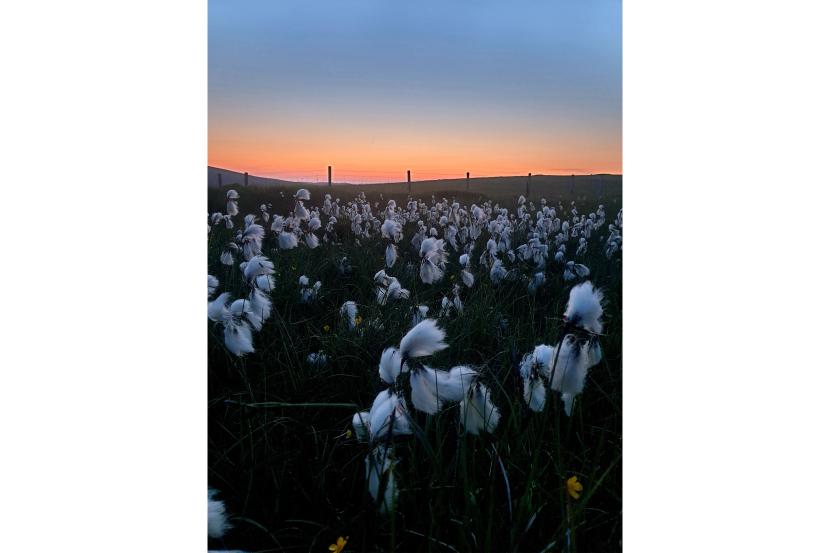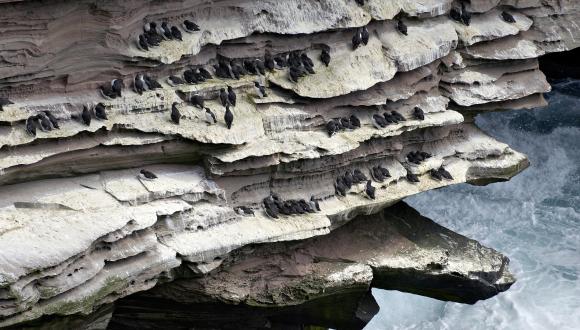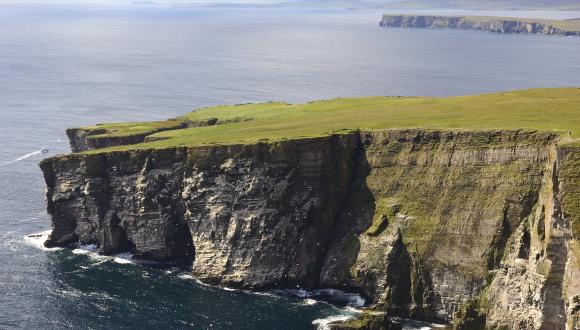Noss NNR Annual Reports
An insight into the life and work on the Isle of Noss National Nature Reserve.
Noss NNR Annual Report 2018
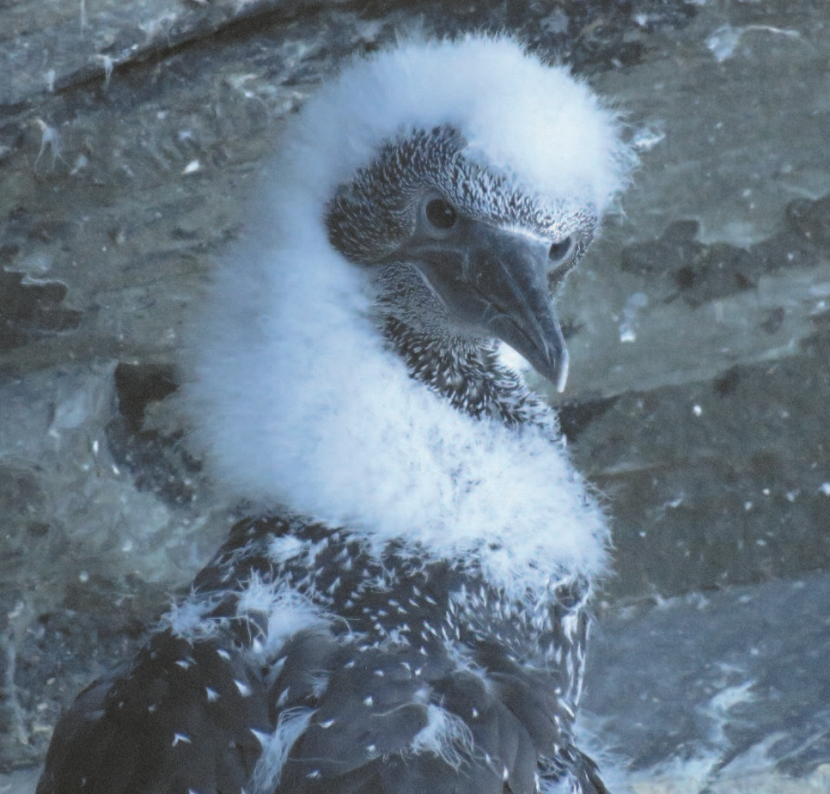
An insight into the life and work on the Isle of Noss National Nature Reserve during the 2018 season
Introduction
Noss is managed as a National Nature Reserve by Scottish Natural Heritage. From May to September each year two wardens take up residence on the island to run the Zodiac ferry from nearby Bressay, and to monitor the internationally important seabird colonies on Noss.
Every summer over 80,000 seabirds breed on the island, including the fifth largest great skua colony in the world and the seventh largest gannetry in the UK. The seabirds on Noss have been carefully monitored for decades, with data going back to 1946. Monitoring seabird populations is important both for seabird conservation and because it can give us a better understanding of how the marine environment (which is notoriously hard to study) is changing. This report gives a summary of the 2018 seabird breeding season and shows how populations on Noss have changed over time.
Visitors to Noss travel to the island in our small inflatable ferry and enjoy a warm welcome from one of the resident wardens. The cliffs alone are impressive, but add on thousands of cliff-nesting birds and, of course, the iconic puffin, and you can see why Noss is such a popular destination for tourists and locals alike. The island is also part of a working sheep farm and provides an excellent example of how agriculture and conservation can work together.
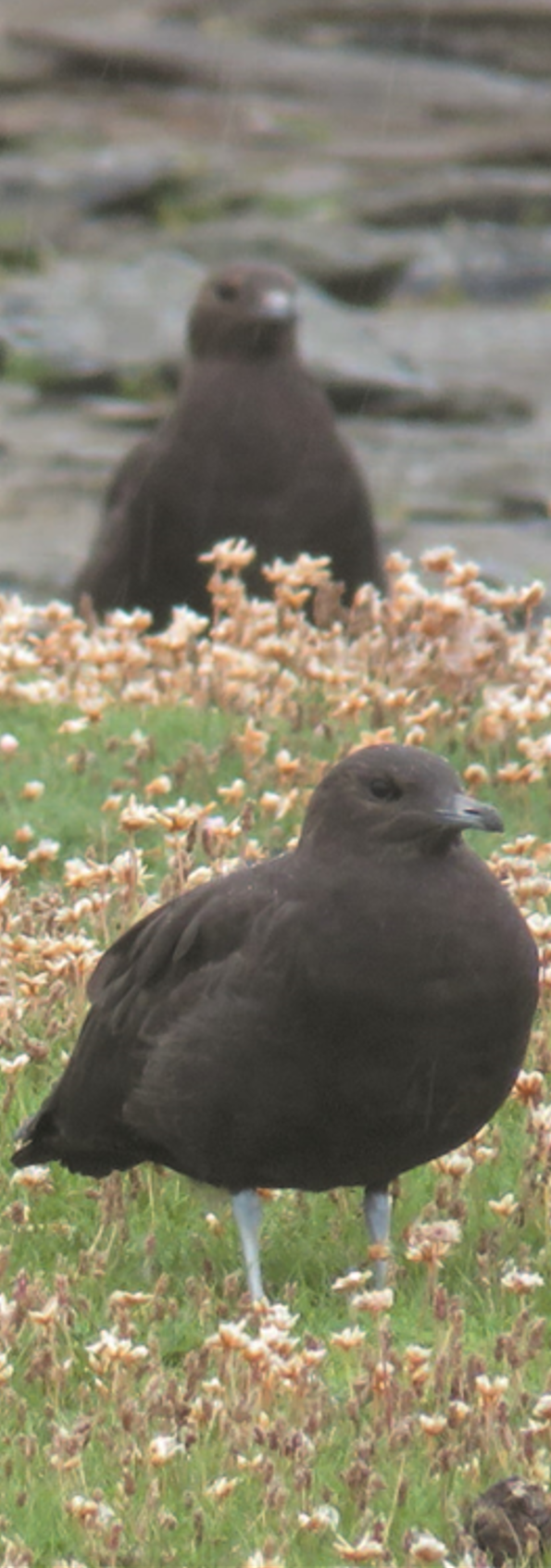
Seabirds
It was a successful breeding season for many of the seabirds on Noss in 2018. This is most likely due to the glorious weather Shetland enjoyed throughout the summer and the plentiful supply of fish around Noss in 2018.
On the island seabirds are studied in a variety of ways: counting whole populations, monitoring productivity (breeding success, recorded as the number of fledged chicks per breeding pair), and counting sections of a colony. Whole island counts are done on a rotational basis as it would be an impossible task to count every species every year!
Noss’ seabirds in 2018 (Shetland names are in brackets):
Great skua (Bonxie)
A full island census of bonxies was carried out, revealing a count of 476. This is a slight increase on the last full island count in 2013, which totalled 465, and suggests that the Noss population is stable. Productivity was better than in 2017, when no chicks fledged from the study plot, but was still a low 0.16 per pair. 40 chicks were ringed outside of the plots.
Arctic skua (Scootie allan)
Only one of our two pairs of Arctic skua returned in 2018, but they did successfully fledge two chicks (giving a high productivity of 2).
Fulmar (Maalie)
Another good season for fulmars, which continued to show a stable productivity of 0.47.
Puffin (Tammie norie)
Puffins were present in good numbers and were regularly seen bringing good supplies of fish back to burrows, sometimes in quick succession, suggesting they also had a successful season.
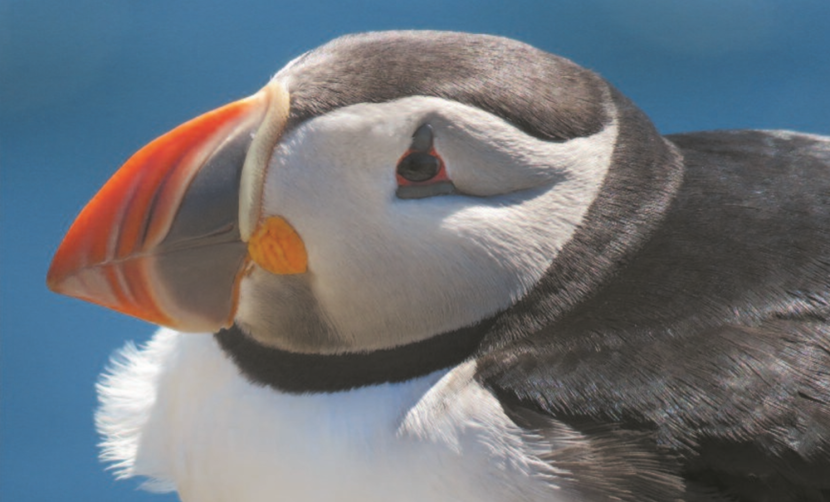
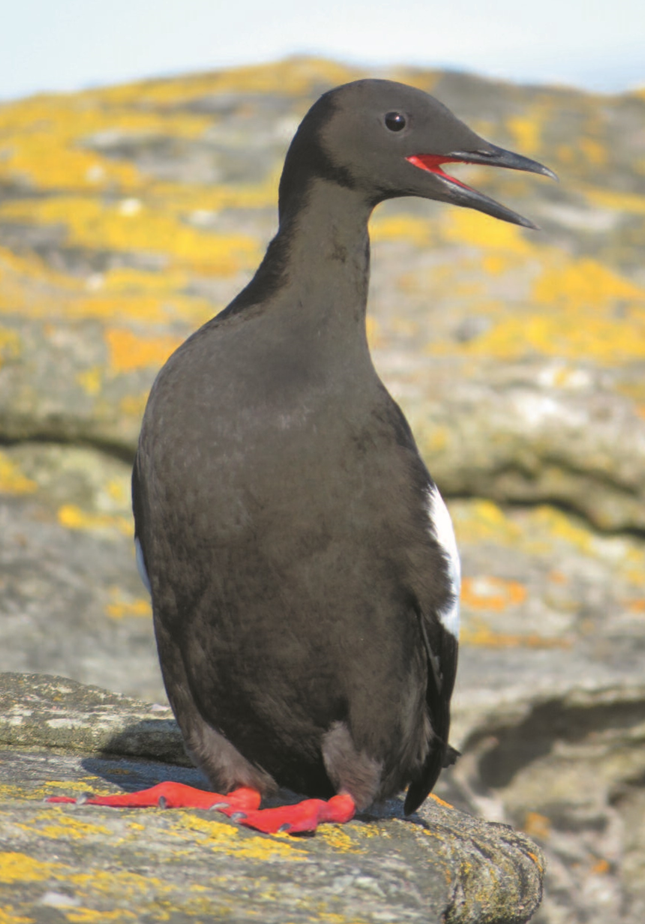
Guillemot (Loomvi)
Attendance within the colony was 13.4% higher than last year. Productivity seemed much better as well with many large chicks heard on the cliff ledges and jumplings noted around the foot of the Noup.
Razorbill (Sea craa)
Razorbills have declined slightly since the last count in 2009. However they were found to increase slightly in 2018 within the island monitoring plots. It is worth noting that it is hard to infer razorbill trends with much of the population hidden in inaccessible locations.
Black guillemot (Tystie)
Monitoring within the study plot revealed 47 adults this year, continuing the recent trend of stability on Noss.
Gannet (Solan gos)
Another good year for this iconic bird of Noss. Combined productivity for the monitored plots was 0.68. Lots of fledglings were seen around the coast from late August.
Shag (Skarf)
Shags had a late start to the year in 2018, and although the numbers of nests were down slightly on the previous year, productivity was up from 1.1 to 1.75, with 35 chicks fledging from 20 monitored nests.
Arctic tern (Tirrick)
This oceanic migrant had an exceptionally good year, and possibly the best year on record with 46 chicks fledging from 55 nests, resulting in a productivity of 0.84. This is impressive when compared with only three chicks fledging from 51 nests last year.
Kittiwake (Rippick maa)
Sadly the distinctive cry of the kittiwake is one that has almost disappeared from Noss, as this once populous breeding gull has continued to suffer a steep decline. The population has crashed from over 10,000 pairs in the 1970s. This year’s all island count revealed just 74 nesting pairs. However this is an increase of 68% on the previous year, and the first time numbers have increased. Productivity was also much improved after no chicks hatched in 2017, with nine chicks fledged from nine monitored nests in 2018, resulting in a high productivity of 1.
Other wildlife
Otters are seen regularly around Noss, and 2018 was no exception, with many sighted around the island throughout the season. At the end of July a mother with two small cubs were witnessed exiting the water onto the boulder scree at Cradle Holm. The adult female was carrying a dead guillemot in her mouth which was fed to her young.
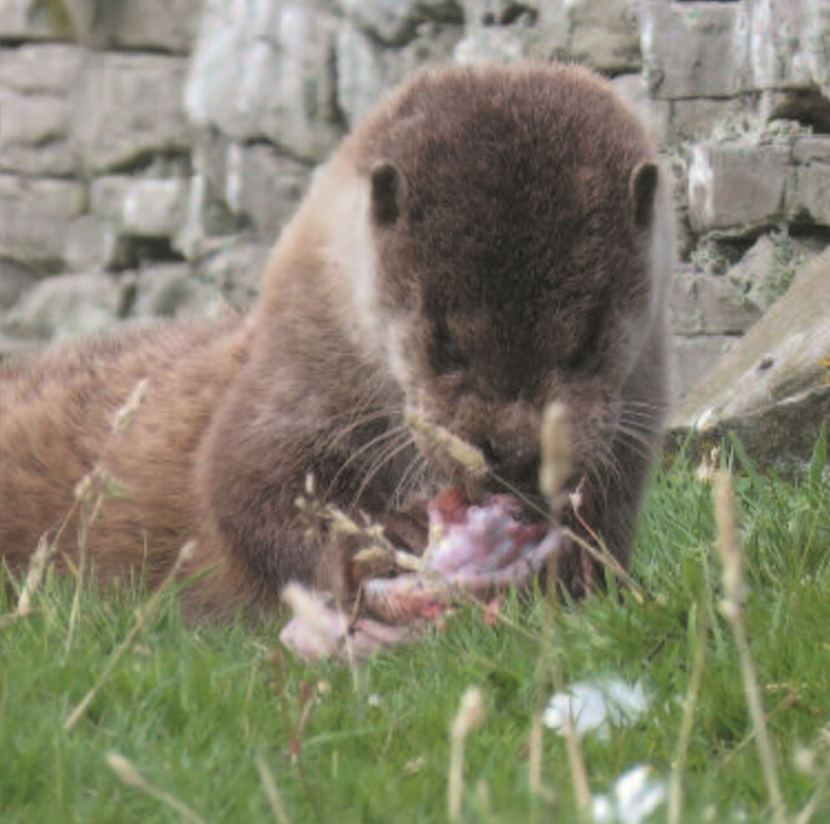
Common and grey seals are regularly seen hauled out around the coast, and in 2018 for the fourth consecutive year a common seal pup was born on the rocks near the house.
Ceatacean sightings were less frequent in 2018, but late August to early September had good records of minke whale, with as many as 10 seen around the island in one day. Risso’s dolphins and harbour porpoise were also seen on a number of occasions, but the stars of the show, once again, were the orcas. Although orcas were only witnessed on one day of the 2018 season, the pod of seven which swam through Noss Sound twice in the same afternoon in July gave visitors and staff incredibly close views. Clearly in hunting mode, this group of apex predators slowly moved through the Sound, checking the voes for prey before moving north, leaving everyone wowed and humbled by their impressive size and hunting prowess.
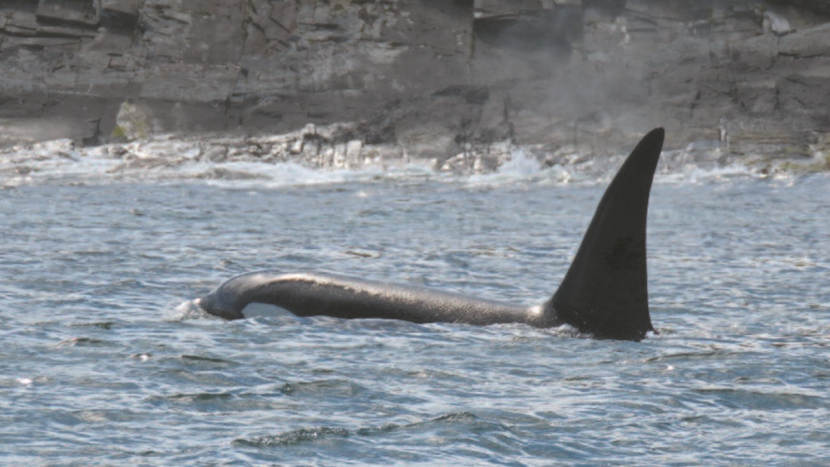
Birds It was a poor year for migration, with a total of just 92 bird species recorded. This is the first time less than 100 species have been recorded since 2013. Highlights included two new species for the Noss bird list. The first was a whitefronted goose in late May, the second was a brief view of a hobby seen flying across Noss Sound in August. An interesting yellow wagtail arrived in May, with a head pattern suggesting that it may have been an intergrade between the ‘greyheaded’ and ‘black-headed’ races. A leg flagged knot was found in July. After reporting the code via EU Ring we discovered the bird had been ringed as an adult on 24 May 2017 at Skorganes in south-west Iceland; a distance of 1220km. In addition to sightings of bluethroat, barred warbler and common rosefinch other notable records included:
Third record of rustic bunting
Seventh of barnacle goose
Ninth of marsh warbler and pink-footed goose.
People
It was another glorious summer in Shetland, one of the finest in many years. As a result visitors came in their droves to visit our beautiful jewel of an island! Noss enjoyed its busiest year for visitors in over 21 years with 2292 people welcomed to the island, eclipsing last season’s busy year. People ventured from all over the world to visit Noss, from Shetland to Chile! All were given an introduction to the island and were able to explore the visitor centre within the historic farmhouse. Of particular interest were the findings shelves, which featured skulls, eggs and whalebones. In addition to those landing on Noss, taking a boat trip around the island is also a popular way to see the reserve and its magnificent seabird colonies.
Events
Noss Open Day was held on 7 July and was a great success. A total of 366 visitors, staff and volunteers enjoyed an excellent day, with activities, guided walks and catering provided by the local Bressay Community Hall. There was a musical theme for 2018 with a harpist playing soothing music outside the house throughout the day.
Guided walks
A total of 40 people attended three guided walks led by the wardens in 2018. Visitors were thrilled to see close up views of puffins on the walks, and were informed about both the wildlife and history of Noss. Guided walks will be scheduled for the last Saturday of each month in the 2019 season so feel free to come along to be led on a tour by the resident experts.
Research
In addition to the research the wardens carried out in 2018, Lucy Gilbert carried out great skua pellet collection to ascertain bonxie diet.
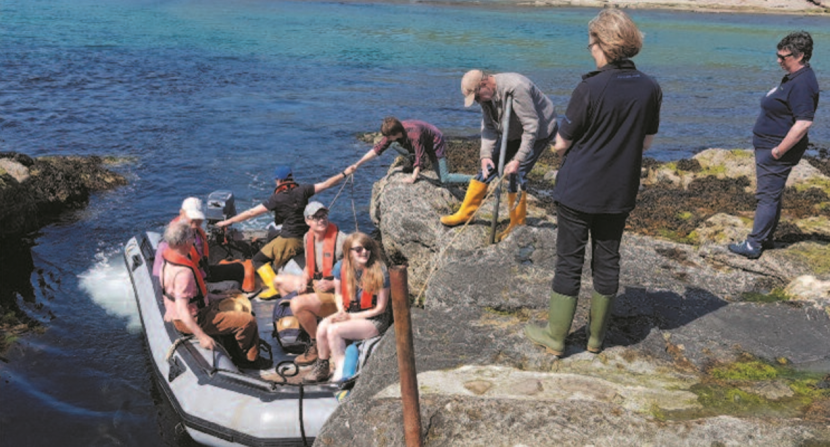
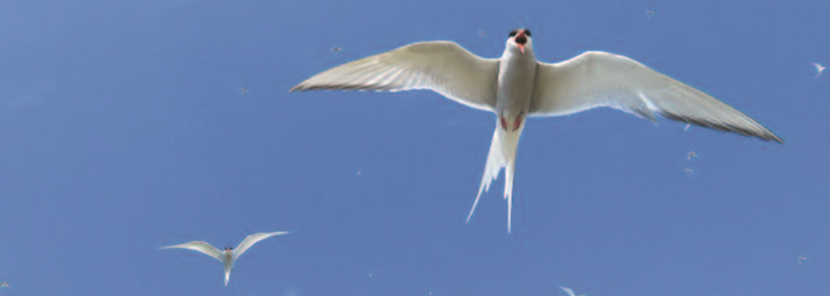
Want to know more?
Noss NNR Manager: NatureScot, Stewart Building, Alexandra Wharf, Lerwick, Shetland ZE1 0LL
Email: [email protected]
Blog: scotlandsnature.blog
Facebook: www.facebook.com/NossNNR/
Webpage: www.nature.scot/noss
The 2018 Wardens’ facebook group: Birds of Noss
Getting here: To check if the Noss ferry is running please call 0800 107 7818
Data collected by the 2018 Noss Wardens: Andy Denton and Jen Clark
Layout by Sue Walker
Photographs by Andy Denton/SNH
Noss NNR Annual Report 2019
Introduction
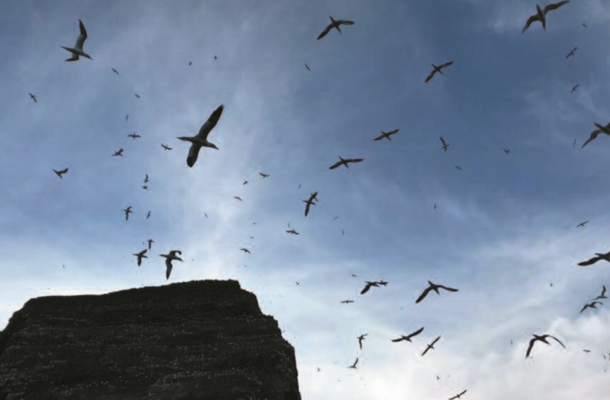
Noss is managed as a National Nature Reserve by Scottish Natural Heritage (NatureScot from May 2020). From May to September each year two wardens take up residence on the island to run the Zodiac ferry from nearby Bressay, and to monitor the internationally important seabird colonies on the island.
Every summer over 80,000 seabirds breed on Noss, including the fifth largest great skua colony in the world and the seventh largest gannetry in the UK. The seabirds on Noss have been carefully monitored for decades, with data going back to 1946. Monitoring seabird populations is important both for seabird conservation and because it can give us a better understanding of how the marine environment (which is notoriously hard to study) is changing. This report gives a summary of the 2019 seabird breeding season and shows how populations on Noss have changed over time.
Visitors to Noss travel to the island in our small inflatable ferry and enjoy a warm welcome from one of the resident wardens. The cliffs alone are impressive, but add on thousands of cliff-nesting birds and, of course, the iconic puffin, and you can see why Noss is such a popular destination for tourists and locals alike. The island is also part of a working sheep farm and provides an excellent example of how agriculture and conservation can work together.
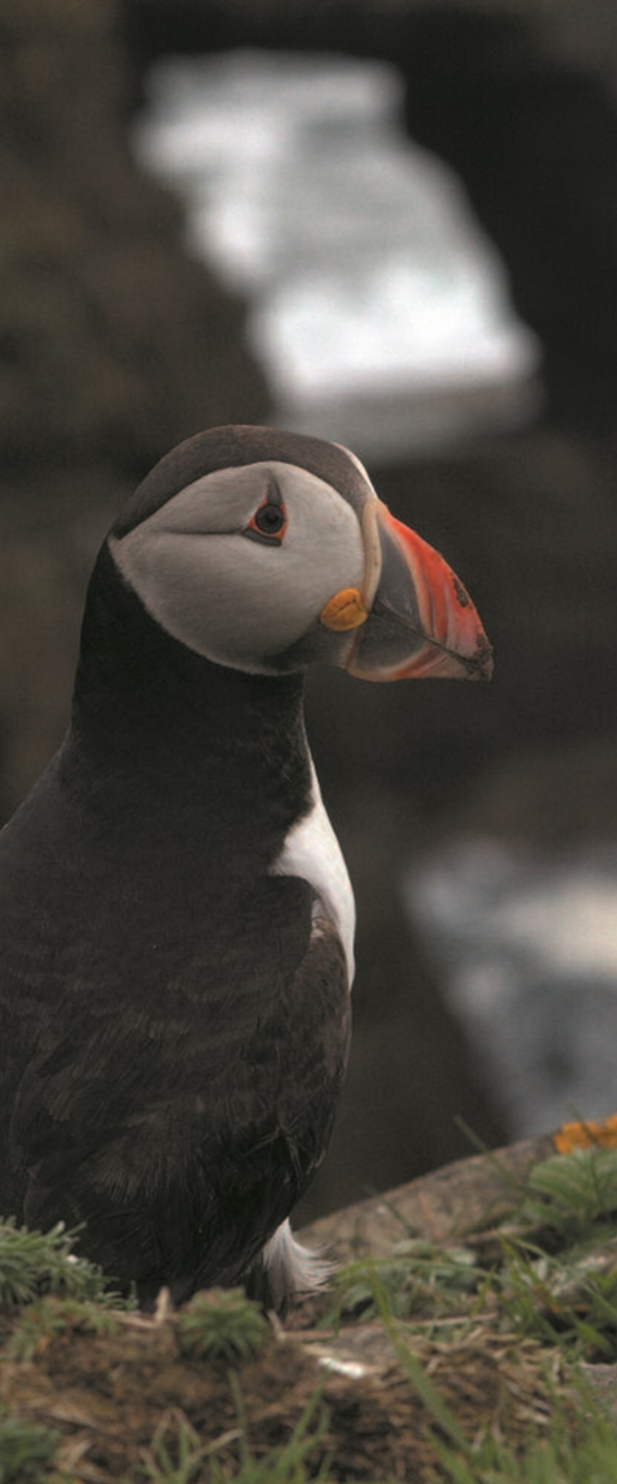
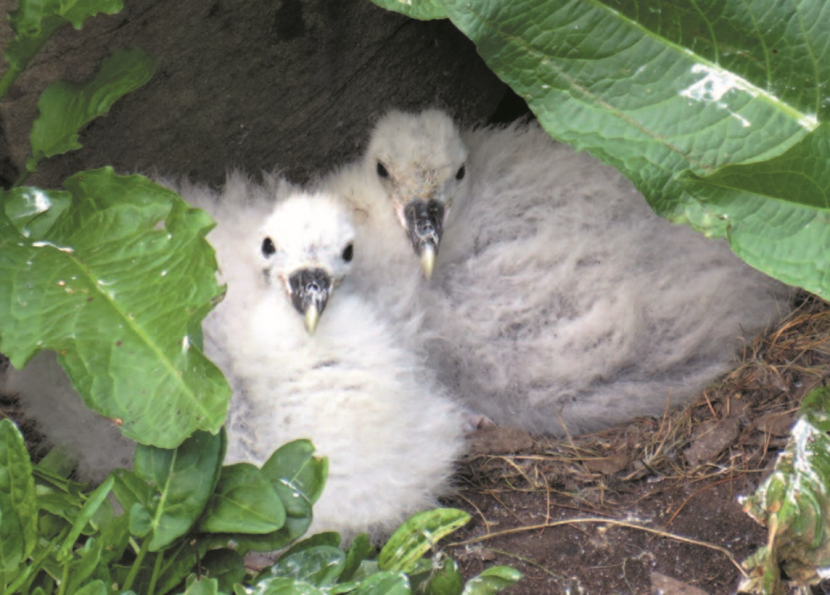
Two fulmar chicks in one nest is a very unusual sight, as they usually only have one chick a season. We think one fell into this nest from the ledge above
Seabirds
It was a successful breeding season for many of the seabirds on Noss in 2019. This was undoubtedly due to a plentiful fish supply, evidence of which could be seen in the Sound, where we saw regular large shoals of sandeels.
On the island seabirds are studied in a variety of ways: counting whole populations, monitoring productivity (breeding success, recorded as the number of fledged chicks per breeding pair), and counting sections of a colony. Whole island counts are done on a rotational basis as it would be an impossible task to count every species every year!
Noss’ seabirds in 2019 (Shetland names are in brackets):
Great skua (Bonxie)
Productivity increased again but was still low at 0.23. 22 chicks were ringed this year.
Arctic skua (Scootie allan)
Only one pair of Arctic skuas returned in 2019 and unfortunately failed to produce any young.
Fulmar (Maalie)
An average year for fulmars with a productivity of 0.36.
Puffin (Tammie norie)
Puffins were present in good numbers and were regularly seen bringing good supplies of fish back to burrows, sometimes in quick succession, suggesting they also had a successful season.
Guillemot (Loomvi)
Attendance within the colony was 4.5% higher than last year. Many large chicks were seen on the cliff ledges indicating productivity was good as well.
Razorbill (Sea craa)
Razorbills have declined slightly since the last count in 2009, and numbers in the monitoring plots decreased this year. It is worth noting that it is hard to infer razorbill trends with much of the population hidden in inaccessible locations.
Black guillemot (Tystie)
Monitoring within the study plot revealed 49 adults this year, continuing the recent trend of stability on Noss.
Gannet (Solan gos)
A full census of the colony was carried out revealing a total of 13,765 pairs, a 16.8% increase from 2014. Productivity was also good at 0.70 and lots of fledglings were seen around the coast from late August.
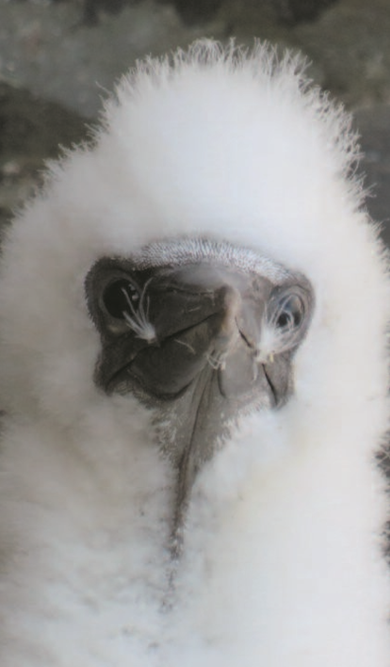
One of the many thousands of gannet chicks to be born on Noss this year
Shag (Skarf)
An excellent year for shags. The number of nests increased to 91 and productivity was up from 1.75 to 2.13 with 51 chicks fledging from 24 monitored nests.
Arctic tern (Tirrick)
This oceanic migrant had another exceptional year with 46 chicks fledging from 56 nests - a productivity of 0.82.
Kittiwake (Rippick maa)
Sadly the distinctive cry of the kittiwake is one that has almost disappeared from Noss. This once populous breeding gull continues to suffer a steep decline. From over 10,000 pairs in the 1970s, this year’s all island count revealed just 76 nesting pairs, a slight increase on 2018, and the second year that numbers have increased. Seven chicks fledged from 10 monitored nests, showing productivity of 0.7, down from last year.
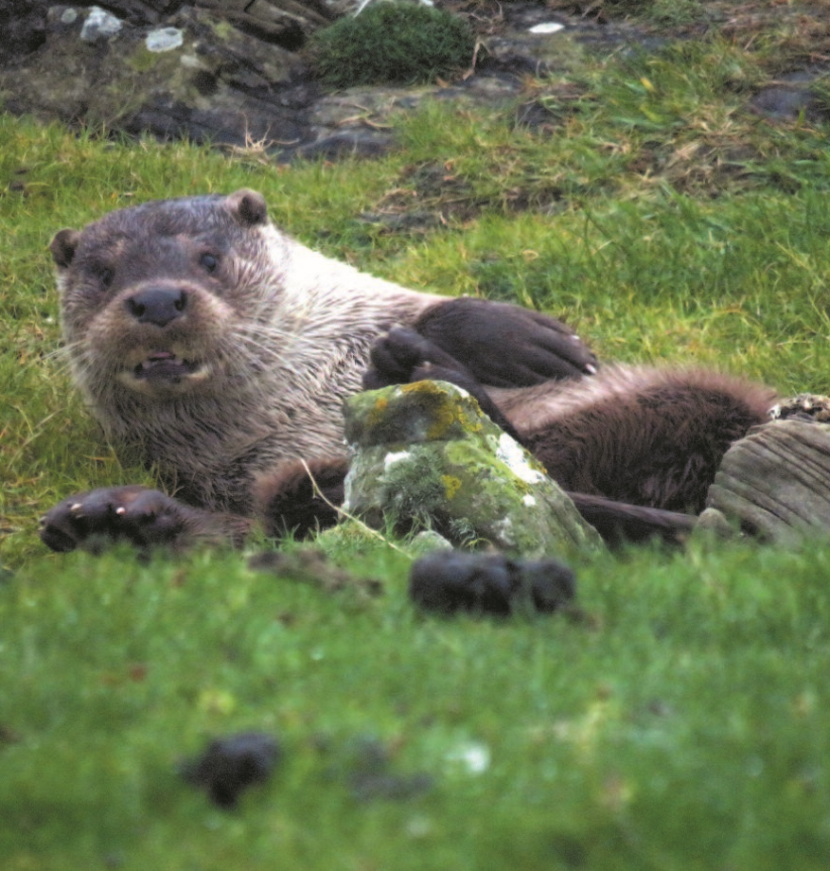
Other wildlife
Otters are seen regularly around Noss and 2019 was no exception, with many sighted around the island throughout the season. At the beginning of July we were privileged to see an individual leading four small cubs to drink from the stream at the bottom of Cradle Holm.
Cetacean sightings were unusually rare.
Minke whales were seen on five occasions and harbour porpoises on just eight.
Orcas were seen on just one day this year, only two days before the wardens moved off the island. Three or four of them, including one bull, were seen swimming round the Noup.
Birds It was an improved year for migration, with 104 species recorded. Highlights included the island’s second records of thrush nightingale and hobby, third records of two-barred crossbill and short-toed lark, and the highest ever count of pink-footed goose. An eastern subalpine warbler that spent three days in the garden in May was the fourth for the island and undoubtedly bird of the year.
In addition to sightings of bluethroat, barred warbler and wryneck other notable records included a seventh record of mute swan; the eighth barnacle goose; and the tenth and eleventh shore lark.
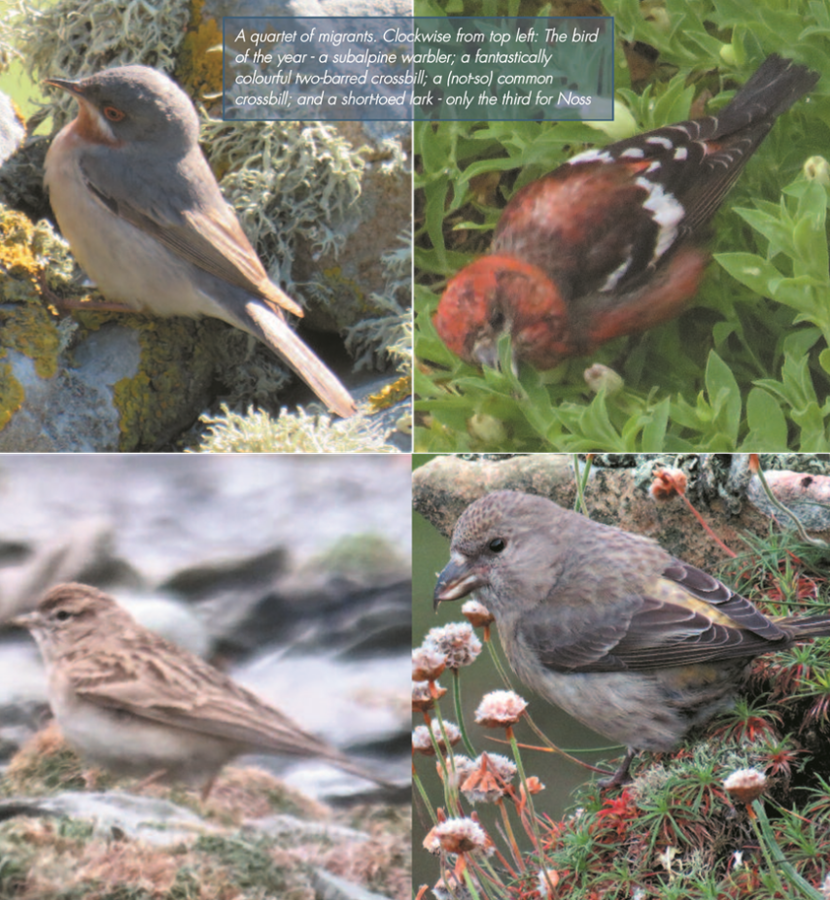
Clockwise from top left: The bird of the year - a subalpine warbler; a fantastically colourful two-barred crossbill; a (not-so) common crossbill; and a short-toed lark - only the third for Noss
People
Despite the mixed weather visitors came in their droves to visit our beautiful island!
Noss enjoyed one of its busiest years with 2,239 people welcomed to the island, just short of last season’s total. People ventured from all over the world to visit Noss, from Shetland to China! All were given an introduction to the island and were able to explore the visitor centre within the historic farmhouse. Of particular interest were the findings shelves, which featured skulls, eggs and whalebones.
In addition to those landing on Noss, taking a boat trip around the island is also a popular way to see the reserve and its magnificent seabird colonies.
Events - Noss Open Day was scheduled for 6 July but unfortunately had to be cancelled due to sea conditions. Guided Walks A total of 14 people attended the guided walk led by the wardens in 2019. Visitors were thrilled to see close up views of puffins on their walk, and were learnt more about both the wildlife and history of Noss.
Guided walks - will be scheduled for the last Saturday of each month next season. Ring the Lerwick office to book your place on a tour led by the resident experts.
Research - In addition to the research the wardens carried out in 2019, Lucy Gilbert carried out great skua pellet collection to ascertain bonxie diet.
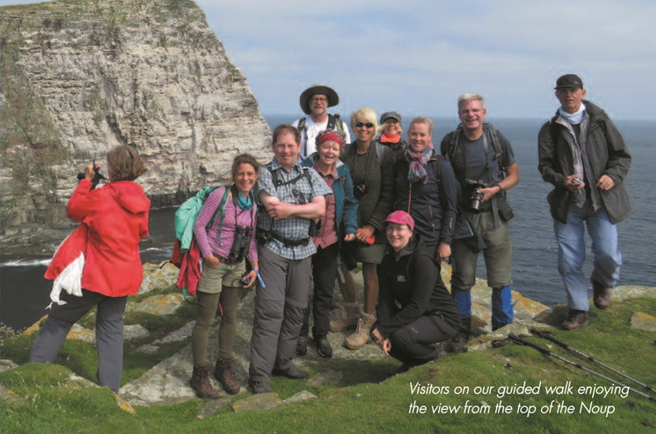

Want to know more?
You can find more information about Noss NNR and our work on the reserve here:
Noss NNR Manager: NatureScot, Stewart Building, Alexandra Wharf, Lerwick, Shetland ZE1 0LL
Email: [email protected]
Blog: scotlandsnature.blog
Facebook: www.facebook.com/NossNNR/
Webpage: www.nature.scot/noss
The 2019 Wardens’ facebook group: Birds of Noss
Getting here: To check if the Noss ferry is running please call 0800 107 7818
Data collected by the 2019 Noss Wardens: Jen Clark and Duncan Halpin
Layout by Sue Walker
Photos: Jen Clark/SNH, except short-toed lark:Duncan Halpin/SNH
Noss NNR Annual Report 2021
Introduction
Noss is managed as a National Nature Reserve by NatureScot. From May to September each year two wardens take up residence on the island to run the Zodiac ferry from nearby Bressay, and to monitor the internationally important seabird colonies on Noss. Covid meant no warden presence in 2020, so we were delighted to be back in 2021!
Every summer over 80,000 seabirds breed on the island, including the fifth largest great skua colony in the world and the seventh largest gannetry in the UK. The seabirds on Noss have been carefully monitored for decades, with data going back to 1946. Monitoring seabird populations is important both for seabird conservation and because it can gives us a better understanding of how the marine environment (which is notoriously hard to study) is changing. This report gives a summary of the 2021 seabird breeding season and shows how populations on Noss have changed over time.
Visitors to Noss travel to the island in our small inflatable ferry and enjoy a warm welcome from one of the resident wardens. The cliffs alone are impressive, but add on thousands of cliff-nesting birds and, of course, the iconic puffin, and you can see why Noss is such a popular destination for tourists and locals alike. The island is also part of a working sheep farm and provides an excellent example of how agriculture and conservation can work together.
Seabirds
For most of the seabirds it was a successful breeding season. However a few species saw a fall in productivity compared to previous seasons. There were still large numbers of birds such as shags, Arctic terns, razorbills and puffins feeding on the large shoals of sandeels visible in Noss Sound.
On the island seabirds are studied in a variety of ways: counting whole populations; monitoring productivity (breeding success, recorded as the number of fledged chicks per breeding pair); and counting sections of a colony. Whole island counts are done on a rotational basis as it would be an impossible task to count every species every year!
Noss’ seabirds in 2021 (Shetland names are in brackets):
Great skua (Bonxie)
Productivity was down from 2019, at only 0.08. Great skuas had a bad year across Shetland, with birds from Fair Isle testing positive for bird flu. Nine dead bonxies were found on Noss from late-July. Hopefully 2022 will be a better year for the species, Scotland holding 60% of the world population, mostly in Shetland and Orkney.
Arctic skua (Scootie allan)
Only one pair of Arctic skuas returned in 2021, and made an attempt to breed with a clutch of two eggs, but unfortunately they didn’t fledge any chicks this season, giving a productivity of 0.
Fulmar (Maalie)
Another average season for fulmars, with a productivity of 0.33.
Puffin (Tammie norie)
Puffins were present in good numbers. They were regularly seen bringing good supplies of fish back to burrows, and were often seen fishing in the Sound.
Guillemot (Loomvi)
A whole island census was undertaken this year, and 23,733 guillemots were counted. Numbers have been stable since 2004, following a decline.
Razorbill (Sea craa)
A whole island census revealed 561 razorbills on Noss, an increase of 3.5% since the last count. Attendance in the study plots was the highest since 2012, but still remains within the trends for Noss.
Black guillemot (Tystie)
Monitoring within the study plot revealed only 35 adults this year, a decrease of 30.6% from 2019 and the lowest count in 10 years.
Gannet (Solan gos)
Another good year for this iconic bird of Noss. Combined productivity for the monitored plots was 0.69. Plenty of fledglings were seen around the coast from late August.
Shag (Skarf)
The number of nests was up slightly from last year. However productivity in sample plots was down from 2.13 to 1.19, with 31 chicks fledging from 26 nests.
However large rafts of both adult and juvenile shags were seen daily in Noss Sound, indicating that productivity across the whole island may have been higher than indicated by the sample plots.
Arctic tern (Tirrick)
The number of breeding pairs of Arctic terns decreased from the 2019 season, with a peak count of 13 ‘apparently occupied nests’ compared to 56, and only 10 fledglings this season compared to 46 in 2019. Despite this productivity was still good at 0.77.
Kittiwake (Rippick maa)
The distinctive cry of the kittiwake is one that has almost disappeared from Noss, as this once populous breeding gull has continued to suffer a steep decline. Down from over 10,000 pairs in the 1970s; this year’s all island count revealed just 77 nesting pairs, an increase of just one from 2019. Productivity was down this season at 0.5 compared to 0.7 in 2019, with only three chicks fledging from six nests.
Other wildlife
Otters are seen regularly around Noss and 2021 was no exception, with many sighted on the island throughout the season. There were two families seen around the island, a mum with three large cubs that were seen entering the holt at Booths Voe, and another with two smaller cubs, who were regularly seen feeding around Voe o da Mels.
Common and grey seals are regularly seen hauled out around the coast, and a common seal was seen with a suckling pup from early July on the rocks below the visitor centre at Gungsti.
Cetacean sightings increased in both number and variety compared to the 2019 season.
There were sightings of harbour porpoise, Risso’s dolphins and minke whale. But the highlights of the season were white-beaked dolphins and orca. There were six orca sightings this season, the first being only eight days into the season, where seven were seen milling about the Noup. On another occasion wardens witnessed orcas having a fight with a pod of Risso’s dolphins south of Noss. White-beaked dolphins were only recorded on four dates, but on 24 August a pod of about 20 put on quite a display south of the island.
Birds
108 species were recorded on Noss this year, an improvement from the previous two seasons. Highlights included record breaking numbers of willow warblers and pied flycatchers in the spring, and chaffinches in the autumn. There were two firsts for Noss this season, with a red grouse found hiding in the toilet in late August, and a hoopoe found late September. Other highlights included the fourth record of rose-coloured starling, a seventh record of greenish warbler, ninth record of whooper swan, as well as records of barred warbler, icterine warbler, red-backed shrike and wryneck.
People
Covid 19 restrictions saw a reduced capacity for bringing ferry visitors over to the island to safely maintain social distancing. As a result, only half the usual number of visitors were logged, with 851 people landing.
Events & Guided Walks
Unfortunately due to Covid 19 restrictions to ferry passage, no open day or guided walks happened on Noss this season. However, both wardens assisted Chris Dyer on two guided walks, one at Culliesbrough on 21 July and a second one at Noss Sound on the evening of 11 August. This was organised in conjunction with Bressay Development Ltd. and was aimed at young families.
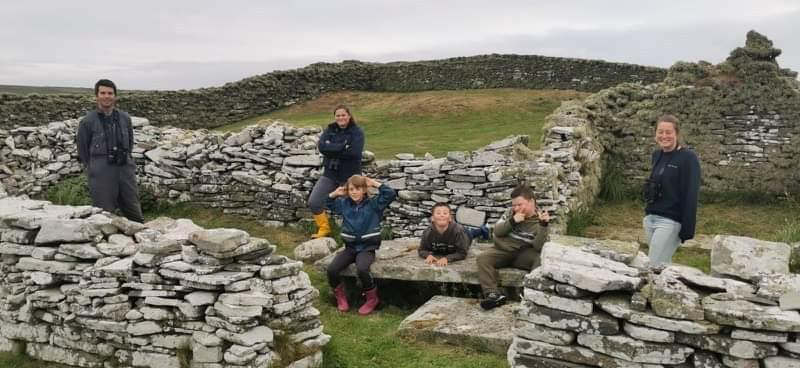
Research
In addition to wardens' annual monitoring, Lucy Gilbert of University of Glasgow collected great skua pellets as part of her ongoing study on bonxie diet. The initial impression is that seabirds and particularly rabbits are forming a greater proportion of pellets, with a decrease in fish remains. This is linked to a ban in fishery discarding.
Want to know more?
You can find more information about Noss NNR and our work on the reserve here:
Noss NNR Manager: NatureScot, Stewart Building, Alexandra Wharf, Lerwick, Shetland ZE1 0LL
Email: [email protected]
Blog: scotlandsnature.blog
Facebook: www.facebook.com/NossNNR/
Webpage: www.nature.scot/noss
Getting here: To check if the Noss ferry is running please call 0800 107 7818
Data collected by the 2021 Noss Wardens: Jen Clark and Sally Reay
Noss NNR Annual Report 2022
Published: 2022
Introduction
Noss is managed as a National Nature Reserve by NatureScot. From May to September each year two wardens take up residence on the island to run the Zodiac ferry from nearby Bressay, and to monitor the internationally important seabird colonies on Noss.
Every summer over 80,000 seabirds breed on the island, including the fifth largest great skua colony in the world and the seventh largest gannetry in the UK. The seabirds on Noss have been carefully monitored for decades, with data going back to 1946. Monitoring seabird populations is important both for seabird conservation and because it can gives us a better understanding of how the marine environment (which is notoriously hard to study) is changing. The ongoing monitoring programme helped give a better understanding of the impact of an outbreak of avian influenza in 2022. This report gives a summary of the 2022 seabird breeding season and shows how populations on Noss have changed over time.
Visitors to Noss travel to the island in our small inflatable ferry and enjoy a warm welcome from one of the resident wardens. The cliffs alone are impressive, but add on thousands of cliff-nesting birds and, of course, the iconic puffin, and you can see why Noss is such a popular destination for tourists and locals alike. The island is also part of a working sheep farm and provides an excellent example of how agriculture.
Seabirds
2022 brought with it ups and down for the breeding seabirds on Noss. An outbreak of avian influenza across Shetland and the rest of the UK in 2022 had a devastating impact on the breeding bonxie population, as 78% of the colony was lost to the virus. Gannets, herring gull and great black-backed gulls were also negatively impacted. However, the sudden decline in bonxie numbers allowed for the kittiwake population to have a successful breeding year with several chicks successfully fledging their nests.
On the island seabirds are studied in a variety of ways: counting whole populations, monitoring productivity (breeding success, recorded as the number of fledged chicks per breeding pair), and counting sections of a colony. Whole island counts are done on a rotational basis as it would be an impossible task to count every species every year!
Noss’ seabirds in 2022 (Shetland names are in brackets):
Great Skua (Bonxie)
A whole island census was completed this season to understand the impact of avian flu on the island’s bonxie population. 103 apparently occupied territories (AOTs) were discovered which is down from 476 in 2018, a decrease of 78%. A number of the dead birds were found to be ringed which informed us of the age of those dying from the virus. The oldest ringed bird discovered had been ringed as a chick on Noss in 1993, making it 29 years old when it died. In the study plots 21 AOTs were found, down from 80 last season however the surviving bonxies had some breeding success with a productivity of 0.29.
Arctic Skua (Scootie Allan)
There were no breeding attempts on Noss this season, although up to four birds were seenregularly throughout the season and almost daily in August, usually harassing the arctic terns in Noss Sound.
Fulmar (Maalie)
The whole island census was undertaken this year in which 4,347 nesting pairs were counted, a decrease of 14.63% since the last count in 2016. Despite the decline in breeding numbers across the island productivity was up at 0.5 compared to 0.33 in 2021.
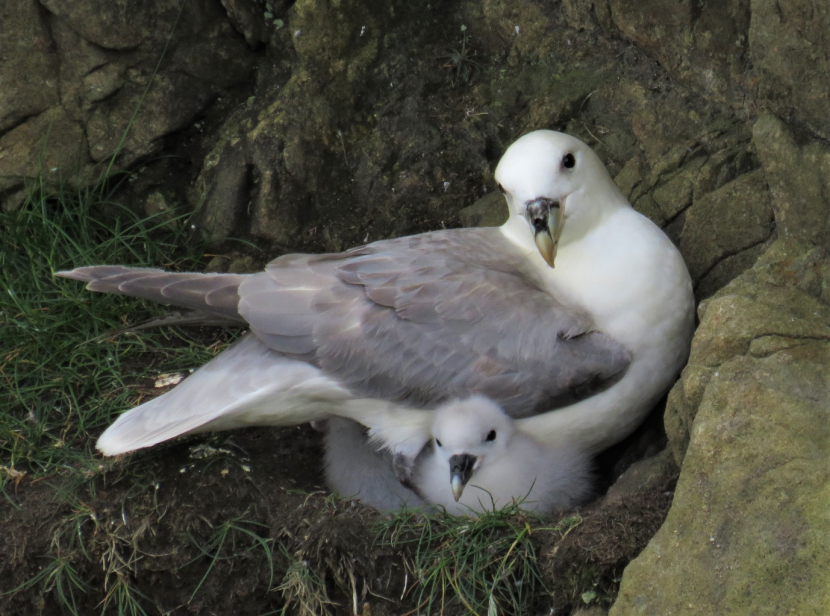
Puffin (Tammie Norie)
Puffins were present in good numbers and were regularly seen bringing good supplies of fish back to burrows and were often seen fishing in Noss Sound.
Guillemot (Loomvi)
Attendance at the monitoring plots remained stable this season. A guillemot breeding on the on the cliffs on the north side of the island was spotted with a ring which revealed the bird to be 31 years old! It had been ringed as a chick on the Isle of Canna in 1991.
Razorbill (Sea Craa)
The razorbill population was found to remain stable this year and adults were regularly seen fishing for food to feed young in Noss Sound.
Black Guillemot (Tystie)
A pre-breeding count revealed 38 adults within the study plot which is an increase of four from 2021.
Gannet (Solan Gos)
An unscheduled whole island census was completed to give an indication of the impact of avian flu on the island population. 11,471 apparently occupied nests (AONs) were counted, a decrease of 16.7% since 2019, bringing the population to a level similar to what it was at in 2014. Productivity within the monitoring plots was also down at 0.42 compared to 0.69 in 2021.
Shag (Skarf)
A successful year for shags with the all-island count revealing 101 AONs, six more than 2021. Productivity with the monitoring plots was also up at 1.71 with 41 chicks fledging from 24 nests compared to 1.19 last season.
Arctic Tern (Tirrick)
Arctic terns had their best breeding season on Noss since records began. After a particularly bad year in 2021 when only 13 AONs were counted it was a relief to see the terns have such a successful year with 78 AONs recorded across the island. Productivity was also the highest ever with 84 chicks fledged giving a productivity of 1.08 compared with 0.77 in 2021. Huge shoals of sandeels provided a rich source of food and terns could be seen regularly feeding in Noss Sound throughout the season.
Kittiwake (Rippick Maa)
Kittiwakes have suffered a steep decline on Noss and throughout the rest of Shetland since the 1970’s however 2022 is the first year in recent years that has seen a notable increase in breeding pairs across the island. 118 AONs were recorded which is an increase of 53% on last year’s count. Productivity was also high at 0.9 compared to 0.5 in 2021. This is likely a result of the decline in bonxie numbers due to avian flu, a species that is known to steal food from kittiwakes. However, it is still a far cry from the 10,000 pairs that nested across the island in the 1970s.
Other Wildlife
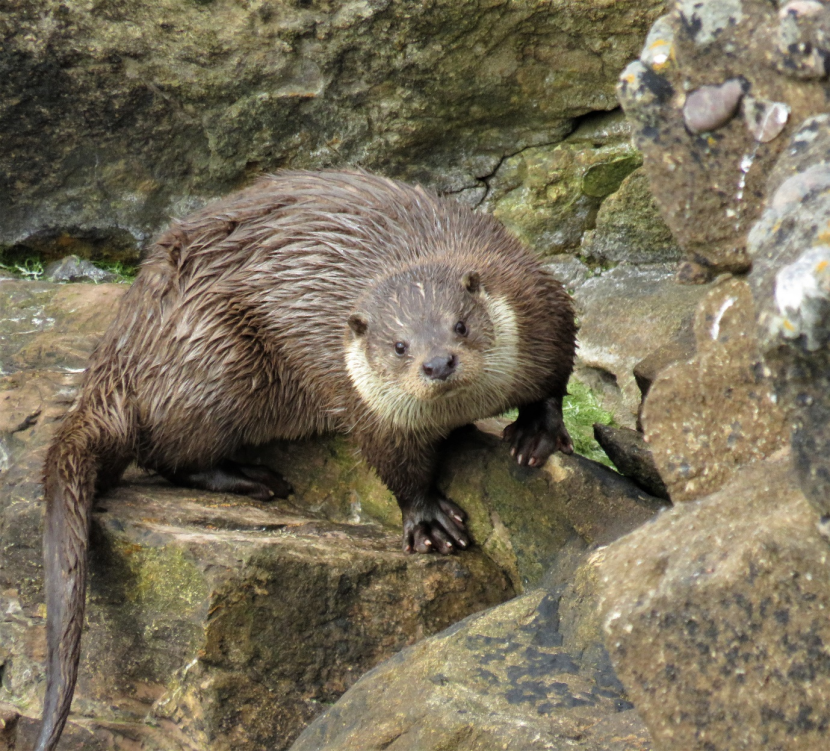
Otters were seen less frequently in 2022 but were still sighted around the voes throughout the season. They were recorded on 36 dates, the best being the 29th April when six individuals were seen around the island, including a mum and two cubs at Cradle Holm. This family were seen again in May when mum brought in a huge fish for her cubs.
Common and grey seals are regularly seen hauled out around the coast. A common seal was seen with a suckling pup in late July on the rocks at Cols Ness.
Cetaceans were less frequent compared to 2021 with stormy weather in 2022 that meant fewer calm days for spotting fins on the water. There were sightings of harbour porpoise, minke whale, and orca, but the highlight of the season was a pod of over 100 white-beaked dolphin which were seen on 19th September between Cradle Holm and the Noup, jumping out of the water and racing through the waves. On the same day there were also up to seven minke whales seen feeding around the same area. There were only two orca sightings this season compared to six last year. Harbour porpoise were recorded on seven dates this year.
Basking shark were sighted on three dates in 2022 which were the first sightings of the world’s second largest fish around Noss waters since 2017.
Small adder’s tongue, a rare fern in Shetland, was located on a small patch of ground where it had been found in the past with 13 plants counted.
Birds
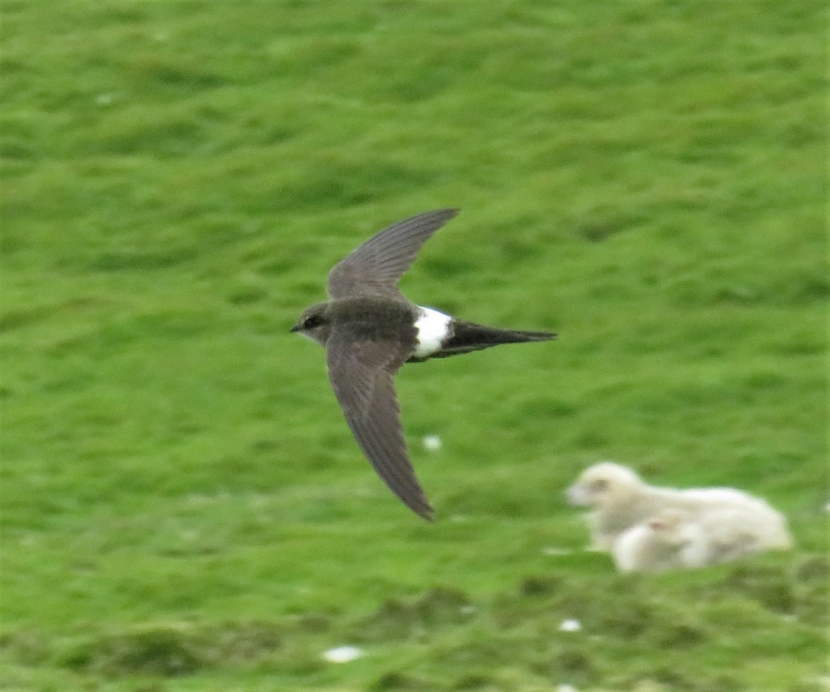
102 species were recorded on Noss this year which is a fairly average season for Noss. The bird of the year was undoubtedly the Pacific swift which was spotted flying around the Noup on the 21st June after initially being found at Sumburgh Head two days earlier. This is the first ever record of Pacific swift for Shetland and the second record for Scotland. Other highlights included the island’s third record of hobby and the fourth records of rustic bunting and Slavonian grebe. In addition to sightings of bluethroat, wryneck, barred warbler and icterine warbler other notable records included the 8th record of greenish warbler and the 15th record of turtle dove.
People
The Noss ferry service started on the 1st May and continued until the 30th June. The service was suspended earlier than usual due to the avian flu outbreak. 936 people visited Noss in 2022.
Research
Due to avian influenza there was no additional research undertaken on top of the wardens annual monitoring this year.
Want to know more?
Find more information about Noss NNR and our work on the reserve:
Noss NNR Manager: NatureScot, Stewart Building, Alexandra Wharf, Lerwick, Shetland ZE1 0LL
Email: [email protected]
Blog: scotlandsnature.blog
Facebook: www.facebook.com/NossNNR/
Webpage: www.nature.scot/noss
The 2022 Wardens’ Facebook group: Birds of Noss
Getting here: To check if the Noss ferry is running please call 0800 107 7818
Data collected by the 2022 Noss Wardens: Jen Clark and Sally Reay
Noss NNR Annual Report 2023
Published: 2024
Introduction
Noss is managed as a National Nature Reserve by NatureScot. From May to September each year two wardens take up residence on the island to run the zodiac ferry from nearby Bressay, and to monitor the internationally important seabird colonies on Noss.
Every summer over 60,000 seabirds breed on the island, including the fifth largest great skua colony in the world and the seventh largest gannetry in the UK. The seabirds on Noss have been carefully monitored for decades, with data going back to 1946. Monitoring seabird populations is important both for seabird conservation and because it can gives us a better understanding of how the marine environment (which is notoriously hard to study) is changing. The ongoing monitoring programme helped give a better understanding of the impact of the outbreak of avian influenza that hit the island in 2022. This report gives a summary of the 2023 seabird breeding season and shows how populations on Noss have changed over time.
Visitors to Noss travel to the island in our small inflatable ferry and enjoy a warm welcome from one of the resident wardens. The cliffs alone are impressive but add on thousands of cliff-nesting birds and, of course, the iconic puffin, and you can see why Noss is such a popular destination for tourists and locals alike.
Seabirds
2023 was a year of recovery for some of the breeding birds on Noss after many seabirds suffered from Highly Pathogenic Avian Influenza (HPAI) in 2022. A census of the bonxie population revealed a decline of 85% since the last pre-HPAI count in 2018. Gannets were also found to be down from their last count before the avian flu outbreak, suffering a decline of 10% since 2019. No gannets or bonxies were found to have died from the virus on Noss in 2023, however Arctic tern chicks tested positive for HPAI in June, causing most of the colony to fail this year.
On the island seabirds are studied in a variety of ways: counting whole populations, monitoring productivity (breeding success, recorded as the number of fledged chicks per breeding pair), and counting sections of a colony. Whole island counts are done on a rotational basis as it would be an impossible task to count every species every year!
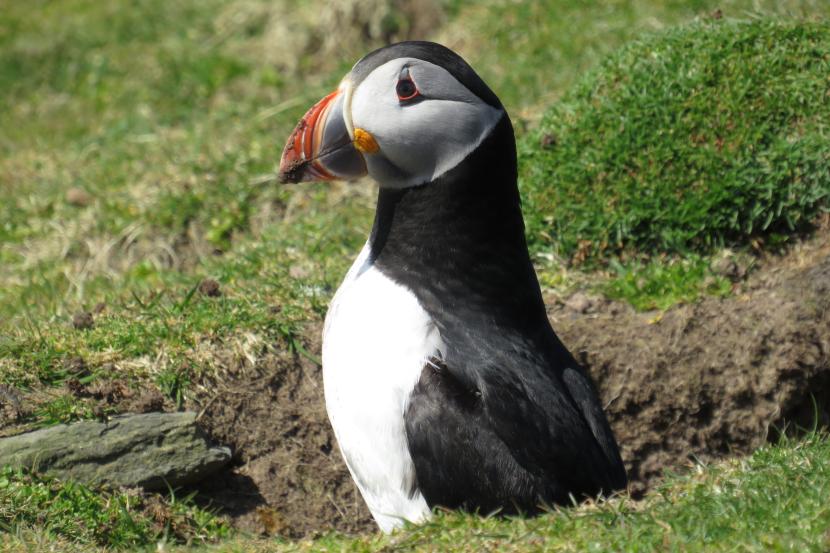
Noss’ seabirds in 2023 (Shetland names are in brackets):
Great Skua (Bonxie)
A whole island census was conducted to help understand the impact of avian flu on the island’s bonxie population. 69 apparently occupied territories (AOT) were counted, down from 476 in 2018, a decrease of 85%. 13 AOTs were found within the breeding success study plots, down from 21 last season. Three chicks survived to fledging age giving a productivity of 0.23, the same as in 2019 before the HPIA outbreak. There were no signs of HPAI found within the bonxie colony this year.
Arctic Skua (Scootie Allan)
There were no breeding attempts on Noss this season, although up to four birds were seen regularly throughout the season around the cliffs.
Fulmar (Maalie)
Fulmar productivity in the monitoring plots was 0.3, which is down from 0.5 in 2022. This is the lowest recorded productivity since 2015, along with the lowest number of apparently occupied sites (AOS) within the plots since 2015.
Puffin (Tammie Norie)
A peak count of 545 puffins were recorded during a whole island census, which is down from 1174 counted at the last census in 2017.
Guillemot (Loomvi)
Attendance at the guillemot monitoring was down by 6.9% however this sits well within the normal fluctuation of average attendance over the last 10 years.
Razorbill (Sea Craa)
Razorbill attendance within the study plots decreased by 38% from 2022, yet numbers are still set within the 10 year average. Adults were regularly seen fishing for food to feed young in Noss Sound.
Black Guillemot (Tystie)
A pre-breeding count in April revealed 51 adults within the black guillemot study plot which is the highest count since 2016.
Gannet (Solan Gos)
A whole island gannet census was carried out to continue monitoring of the effect of HPAI on the colony. 12,335 apparently occupied nests (AON) were counted in 2023, an increase of 7.5% from last year’s count, however this is down by 10.4% compared to the last pre-HPAI count in 2019. Productivity within the monitoring plots was 0.7, up from 0.42 in 2022.
Shag (Skarf)
A successful year for shags with the all-island count revealing 121 AONs, the highest count since 1984 (132 AONs). Productivity with the monitoring plots was slightly down at 1.32 compared to 1.71 in 2022, with 37 chicks fledging from 28 nests.
Arctic Tern (Tirrick)
Arctic terns had an unsuccessful breeding season. Birds were initially late to settle however adults
eventually began laying, and 92 AONs were counted. However, when chicks hatched they did not survive beyond one to two weeks old, and after sampling they were confirmed positive for avian flu. Only three chicks successfully fledged from 92 nests.
Kittiwake (Rippick Maa)
The whole island census of kittiwakes revealed 84 AONs, down from 118 last season. Productivity was down at 0.1 with only one chick fledging from the monitoring plots, compared to 0.9 in 2022 when eight chicks successfuly fledged the plot.
Other Wildlife
Otters were recorded more frequently in 2023, often seen around the voes and in Noss Sound. A mum with two pups were regularly seen feeding and playing in the water throughout the season.
Common and grey seals were regularly seen hauled out around the coast. A common seal pup was born on the rocks below the house and was seen suckling from the adult most days.
It was a quiet season for cetacean sightings however harbour porpoise, Risso’s dolphin, white-sided and white beaked dolphin were all seen off the island in 2023. The highlight of the season was when
five minke whale were seen feeding close into the island’s coast for two days in September. Orca were recorded going through Noss Sound in September.
Barrel jellyfish, one of the largest jellyfish to be found in UK waters, was sighted in the water below the Noup on two occasions this season.
It was a phenomenal year for red admiral butterflies, with 396 recorded throughout the season. There was a peak count of 42 across the island on the 4th July, and fresh individuals were noted early September.
Round-leaved Sundew was recorded on Noss this season, a carnivorous plant and a sign of healthy peatlands.
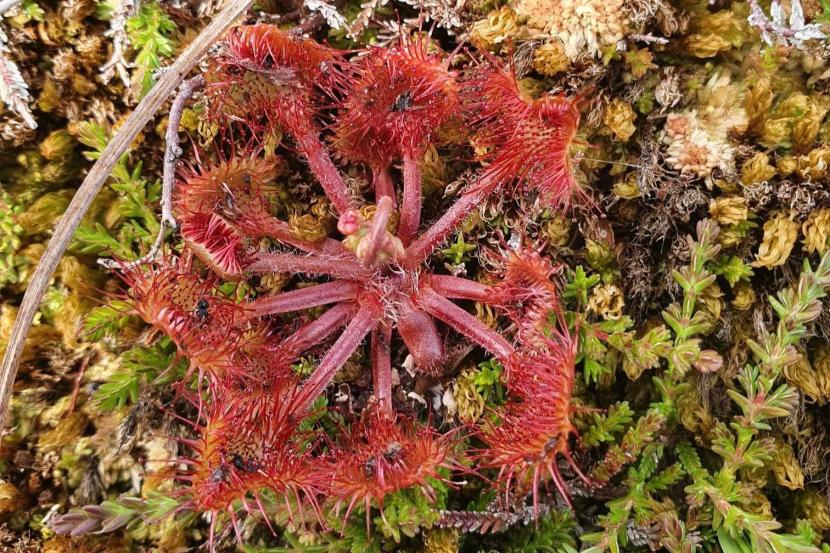
Passage Birds
It was a good season for records of migrant birds, with 107 species of bird recorded on Noss in 2023. Highlights included the island’s first record of Pallas’s grasshopper warbler, the second island records of hoopoe, Blyth’s reed warbler, and little bunting, the third island record of honey buzzard and great spotted woodpecker, and the fourth island record of common crane – as the UK’s tallest bird, this one was hard to miss, measuring 1.1m tall.
People
It was a glorious summer in Shetland and one of the finest in recent years, with several calm, sunny days. We welcomed 1591 visitors to the island as people travelled from all over the world, and as far away as Australia to visit the reserve. All were welcomed with an introductory talk in the visitor centre where new interpretation was installed in the latter part of the season. In addition to those landing on Noss, taking a boat trip around the island is also a popular way to see the reserve and its magnificent seabird cliffs.
Guided Walks
One guided walk took place in August with one participant, who wrote back to say thank you, and that she had learnt so much more about the islands ecosystems and human history.
Research
Dr Emmanouil (Manos) Lempidakis of Swansea Lab for Animal Movement visited Noss and the Lerwick office to collect historical seabird data for the reserve to assist with a project looking at the effect of prevailing winds on seabirds at nesting sites.
Want to know more?
You can find more information about Noss NNR and our work on the reserve here:
Noss NNR Manager: NatureScot, Stewart Building, Alexandra Wharf, Lerwick, Shetland ZE1 0LL
Email: [email protected]
Blog: scotlandsnature.blog
Facebook: www.facebook.com/NossNNR/
Webpage: www.nature.scot/noss
The 2023 Wardens’ Facebook group: Birds of Noss
Getting here: To check if the Noss ferry is running please call: 0800 107 7818
Data collected by the 2023 Noss Wardens: Jen Clark and Sally Reay
